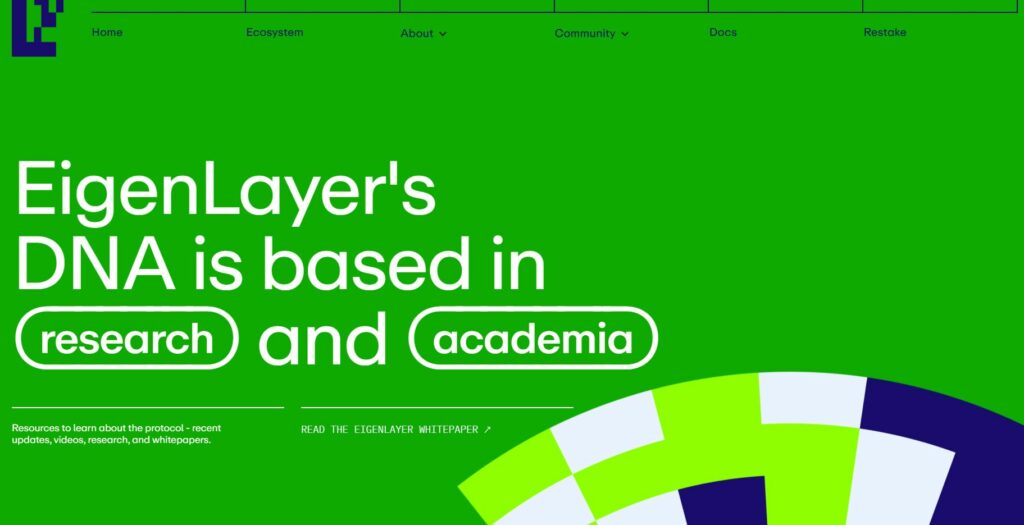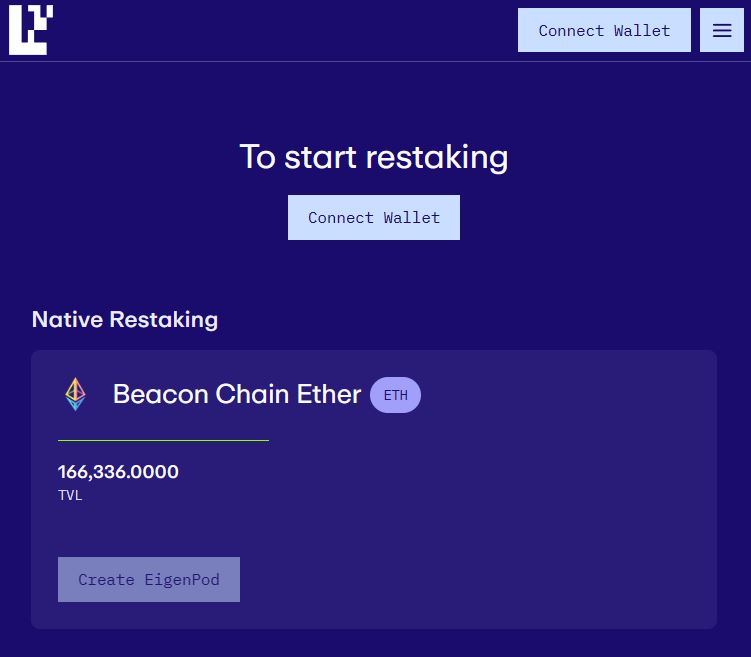For developers, decentralized applications (dApps) built on top of the Ethereum blockchain require a trust network that will secure their systems.
This is what EigenLayer claims to solve—enabling services, EVM-compatible or not, to tap into the pooled security of Ethereum’s stakers, “creating an environment for permissionless innovation and free-market governance.”
Read more about blockchain ecosystems and find more airdrop opportunities on BitPinas:
EigenLayer Introduction
EigenLayer (https://www.eigenlayer.xyz/) is an Ethereum-based protocol that is known for introducing restaking, a concept that allows Ether, and other tokens, to be reused on the consensus layer.
Technically, EigenLayer is a set of smart contracts that allows consensus layer $ETH stakers to opt in to validating new software modules built on top of the Ethereum ecosystem. Stakers can then choose to grant the protocol to add slashing conditions on their staked ETH, as explained by its developers:

“By opting into EigenLayer, stakers can validate for many types of modules including consensus protocols, data availability layers, virtual machines, keeper networks, oracle networks, bridges, threshold cryptography schemes, and trusted execution environments. Instead of fragmenting security between modules, EigenLayer aggregates ETH security across all of them. This increases the security of the decentralized applications (DApps) that rely on the modules.”
Moreover, the team also emphasized that restaking $ETH to provide security among the Ethereum network and the dApps in the ecosystem will reduce capital costs.
“Users that stake ETH natively or with a liquid staking token (LST) can opt-in to EigenLayer smart contracts to restake their ETH or LST and extend cryptoeconomic security to additional applications on the network to earn additional rewards,” its whitepaper read.
EigenLayer Features
EigenLeyer allows its users to restake $ETH. Users have two options: liquid restaking, and native restaking.
What is Liquid Restaking?
Liquid restaking is the process of depositing liquid staking tokens (LSTs). As of this writing, EigenLayer supports the following LSTs:
- $stETH (Lido)
- $rETH (Rocket Pool)
- $cbETH (Coinbase)
- $wBETH (Binance)
- $osETH (Stakewise)
- $swETH (Swell)
- $AnkrETH (Ankr)
- $EthX (Stader)
- $OETH (Origin ETH)
To restake LSTs:
- Step 1: Go to https://app.eigenlayer.xyz/.
- Step 2: Connect a web3 wallet. The accepted wallets are MetaMask (https://metamask.io), Coinbase Wallet (https://www.coinbase.com/wallet), and WalletConnect (https://walletconnect.com).
- Step 3: Under the “Liquid Restaking” section, choose an LST.
- Step 4: Type in the desired amount of token to be restaked.
- Step 5: Click the “Next” button.
- Step 6: Approve the token spending button.
- Step 7: Set a spending cap.
- Step 8: Click the “Next” button.
- Step 9: Click the “Approve” button.
- Step 10: Confirm the transaction.
- Step 11: Monitor the staking rewards and restaked ratio on https://goerli.eigenlayer.xyz/.
Meanwhile, native restaking is a process of setting a validator to withdraw credentials to the protocol. It is only available to Ethereum validators. Validators who are interested can follow this guide.
EigenLayer Airdrop Guide – How to be eligible

As of this writing, there is no confirmed airdrop directly from EigenLayer’s developers. According to CoinGecko, the protocol may soon host an airdrop once it is about to launch its own utility token.
“It is possible that EigenLayer will introduce its own token to improve scalability and security, where potential stakers will need to stake a minimum number of EigenLayer tokens to be eligible to stake,” the crypto-focused data aggregator wrote.
However, the protocol is currently having a points system, strongly hinting about its future airdrop. The “Restaked Points” program seeks to measure a user’s contribution to the shared security of the EigenLayer ecosystem through the quantity and volume of their restaking activities.
EigenLayer’s second stage of its testnet is also now live. To join:
- Step 1: Prepare an Ethereum-compatible wallet (the three wallets listed above) and an ETH address.
- Step 2: Use a Goerli faucet: either Paradigm Goerli Faucet (https://faucet.paradigm.xyz/) or Alchemy Goerli Faucet (https://goerlifaucet.com/).
- Step 3: From the faucet, obtain or request $goETH tokens.
- Step 4: Swap the obtained $goETH to the supported LSTs.
- Step 5: Execute a liquid restaking transaction.
This article is published on BitPinas: Eigenlayer Airdrop and Restaking 101
Disclaimer:
- Before investing in any cryptocurrency, it is essential that you carry out your own due diligence and seek appropriate professional advice about your specific position before making any financial decisions.
- BitPinas provides content for informational purposes only and does not constitute investment advice. Your actions are solely your own responsibility. This website is not responsible for any losses you may incur, nor will it claim attribution for your gains.
- SEO Powered Content & PR Distribution. Get Amplified Today.
- PlatoData.Network Vertical Generative Ai. Empower Yourself. Access Here.
- PlatoAiStream. Web3 Intelligence. Knowledge Amplified. Access Here.
- PlatoESG. Carbon, CleanTech, Energy, Environment, Solar, Waste Management. Access Here.
- PlatoHealth. Biotech and Clinical Trials Intelligence. Access Here.
- Source: https://bitpinas.com/learn-how-to-guides/eigenlayer-airdrop-restaking-101/



